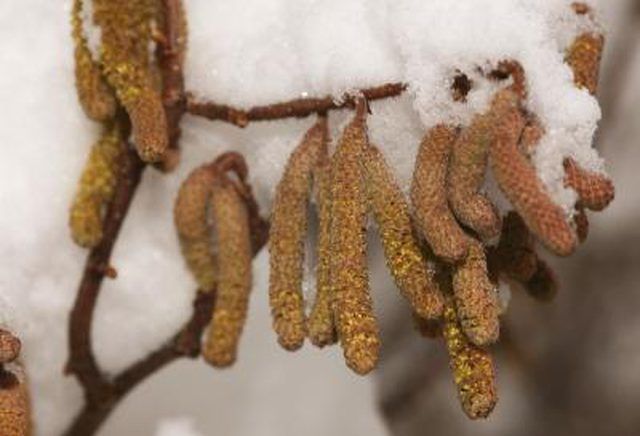Bulbs
Flower Basics
Flower Beds & Specialty Gardens
Flower Garden
Garden Furniture
Garden Gnomes
Garden Seeds
Garden Sheds
Garden Statues
Garden Tools & Supplies
Gardening Basics
Green & Organic
Groundcovers & Vines
Growing Annuals
Growing Basil
Growing Beans
Growing Berries
Growing Blueberries
Growing Cactus
Growing Corn
Growing Cotton
Growing Edibles
Growing Flowers
Growing Garlic
Growing Grapes
Growing Grass
Growing Herbs
Growing Jasmine
Growing Mint
Growing Mushrooms
Orchids
Growing Peanuts
Growing Perennials
Growing Plants
Growing Rosemary
Growing Roses
Growing Strawberries
Growing Sunflowers
Growing Thyme
Growing Tomatoes
Growing Tulips
Growing Vegetables
Herb Basics
Herb Garden
Indoor Growing
Landscaping Basics
Landscaping Patios
Landscaping Plants
Landscaping Shrubs
Landscaping Trees
Landscaping Walks & Pathways
Lawn Basics
Lawn Maintenance
Lawn Mowers
Lawn Ornaments
Lawn Planting
Lawn Tools
Outdoor Growing
Overall Landscape Planning
Pests, Weeds & Problems
Plant Basics
Rock Garden
Rose Garden
Shrubs
Soil
Specialty Gardens
Trees
Vegetable Garden
Yard Maintenance
How to Plant Hazelnut Trees
How to Plant Hazelnut Trees. Hazelnuts (Corylus spp.), also known as filberts, are grown as trees, hedges and ornamental shrubs. Home gardeners generally plant European hazelnut varieties (Corylus avellana) for its larger nuts. This hardy shrub-like tree thrives in U.S. Department of Agriculture plant hardiness zones 4 through 8. Select a sunny or...

Hazelnuts (Corylus spp.), also known as filberts, are grown as trees, hedges and ornamental shrubs. Home gardeners generally plant European hazelnut varieties (Corylus avellana) for its larger nuts. This hardy shrub-like tree thrives in U.S. Department of Agriculture plant hardiness zones 4 through 8. Select a sunny or partly sunny, well-drained location in the garden for your hazelnut trees, spacing them 15 feet apart. You need two trees for cross-pollination; hazelnuts aren't self-pollinating.
Things You'll Need
Shovel
5-gallon bucket
Utility knife
Mulch
Slow-release nitrogen fertilizer
Anvil pruners
Rubbing alcohol
Gloves
Safety glasses
Remove grass and vegetation from the planting area with a shovel in late winter or early spring when the tree is still dormant. If the hazelnut tree is bare-root, remove the wrappings and place the tree in a 5-gallon bucket. Add water until the roots are covered.
Dig a planting hole twice as wide and the same depth as the root ball. Set the excavated soil aside, but do not add any amendments.
Fill the planting hole with water. Wait until the water soaks into the soil. If the water takes more than an hour to soak in, a better alternative would be planting the trees in raised beds.
Cut the grower's pot along the side with a utility knife, splitting it open so you can remove the tree without damaging the trunk or roots. If the tree is bare-root, add a mound of soil in the center of the planting hole.
Slide the tree into the planting hole and remove the grower's pot. Arrange a bare-root tree over the mound of soil carefully to avoid damaging the moist, tender roots.
Backfill with the excavated soil. Tamp the soil over the roots gently and water thoroughly to eliminate air pockets.
Add a 4-inch layer of mulch around the tree, pulling it back 4 inches from the trunk. Mulch helps conserve water and maintain a consistent soil moisture level.
Water young trees once or twice a week during the dry season, adding 10 gallons of water for each inch of the trunk's diameter.
Apply 1/8 pound, or 5 tablespoons, of slow-release nitrogen fertilizer in early spring the year after planting the tree. Scatter the fertilizer under the tree, out to the drip line.
Prune with anvil pruners in late winter to remove dead, broken or diseased branches. The hazelnut may be maintained as a small tree or multistemmed shrub with pruning. Remove root suckers when they appear to prevent the hazelnut from growing into a dense thicket.
Tips & Warnings
Plant hazelnut varieties resistant to eastern filbert blight (Anisogramma anomola). If you see signs of infection, prune out affected twigs and branches as soon as possible to prevent the spread of the fungus.
Disinfect pruning tools to prevent the spread of disease. Dip the blades into a solution of equal parts rubbing alcohol and water between cuts.
Mature hazelnut trees may grow 15 to 20 feet tall and equally wide.
The hazelnuts found in the grocery store are commercially grown on either European hazelnut trees or on hybrids that combine the two native hazelnuts (Corylus americana and Corylus cornuta) and the European hazelnut.
Wear shoes, long pants, long sleeves, gloves and safety glasses when digging holes and planting trees to protect your skin, hands and eyes.